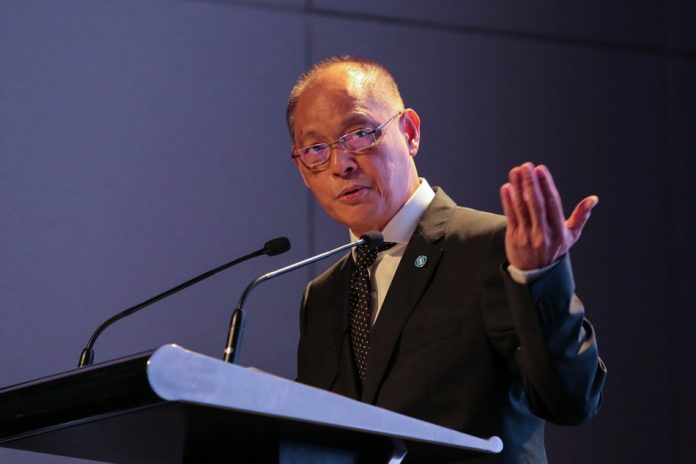
MANILA – Looking on how the central bank can hasten the reduction of banks’ reserve requirement ratio is among the first items on the agenda of incoming Bangko Sentral ng Pilipinas (BSP) governor Benjamin Diokno.
“Siguro ‘yun lang, we can expedite the ano ‘yung reduction ng reserve requirement,” Diokno told reporters on the sidelines of the last edition of his weekly breakfast forum in Manila on Wednesday.
The outgoing Budget chief said he is bent on continuing the policies started by his predecessor, the late BSP governor Nestor Espenilla Jr., who advocated for the lowering of banks’ reserve requirement.
Espenilla earlier vowed to cut the reserve requirement ration to single-digit level under his term.
Reserve requirement ratio refers to the amount of cash a bank must hold in its reserves against deposits made by customers. The Philippines currently has one of the highest across the globe.
Currently, the country’s reserve requirement ratio is at 18 percent.
“Kailangan din naman ‘yun. Policy din naman ni Nesting ‘yun. mataas talaga yun kasi it is basically a tax on banks eh at saka para rin naman ‘yan sa tao,” Diokno said, referring to Espenilla.
The incoming central bank chief, however, clarified that expediting the reduction in banks’ reserve requirement still needs to be studied.
“We will look at the timing. Timing is important. Nakita namin maganda naman ‘yung deceleration ng inflation now so baka kailangan lang namin ng dalawang [percentage] points reduction so March and April… May would be probably,” he said.
Diokno also emphasized that as central bank chief the BSP will remain firm on keeping inflation rate within the government’s target of 2 to 4 percent.
Inflation clocked in at 3.8 percent in February, settling within the government’s target.
The incoming BSP governor also said he will continue Espenilla’s advocacies on promoting financial inclusion and the banking system’s digital transformation. (GMA News)



